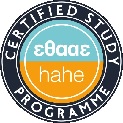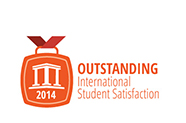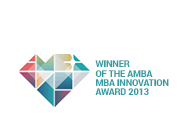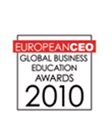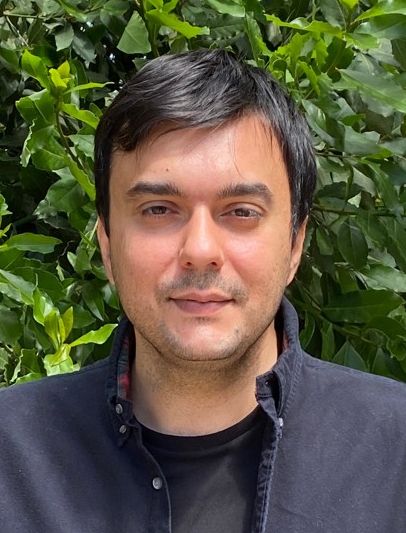 Biological Lattice Industries: An Interview with Filippos Tourlomousis, Founder and CEO
Biological Lattice Industries: An Interview with Filippos Tourlomousis, Founder and CEO
By Eric Soderquist, Director, MBA International Program
The mission of Biological Lattice Industries, Corp. (BLI) is to democratize biofabrication for the global R&D workforce in the life sciences, synthetic biology and pharmaceutical sectors. By connecting lab automation and high-resolution 3D bioprinting with machine intelligence (AI/ML), BLI offers an ecosystem of robotic tools that seamlessly integrate with its core product offering, the Loominus Studio.
BLI’s clients interact with Loominus either for on-demand services or after purchasing any of BLI’s robotic tool offerings that help them design and fabricate the next-generation of biomaterial therapies and devices for human enhancement.
In this interview, BLI Founder and CEO Filippos Tourlomousis explains the core technology, the market gap filled and discusses the importance of combining innovative technologies with innovative business models in the global and Greek deep-tech ecosystems.
- I would like to start by asking you about the unique technology that you have developed. Please explain the core technology behind your product and how it differentiates itself from existing solutions in the market?
At the heart of BLI’s innovative solutions lies a groundbreaking concept I developed during my PhD research and published in a well-respected academic journal. Our research demonstrated, for the first time, that it’s possible to control stem cell behavior by programmatically altering their shape in 3D solely through geometric signals. These signals arise directly from the precisely engineered porous microarchitecture within fibrous biomaterial scaffolds, digitally designed and produced through an advanced continuous 3D printing process. Building on this foundational research, BLI created BioLoom, a state-of-the-art multi-tool 3D bioprinter, capable of producing complex, multi-material scaffolds with precision down to the single-cell scale. Complementing BioLoom, we developed Loominus Studio—an AI-powered software platform designed specifically to democratize biofabrication.
Loominus Studio empowers users without formal design or engineering expertise to effortlessly create limitless scaffold architecture variations, automating both design and manufacturing workflows. Through ongoing market interaction, we quickly recognized Loominus Studio’s broader applicability: it can manage virtually any 3D printer and streamline automation across the entire biofabrication R&D lifecycle. Moreover, BioLoom emerged as the first printer of its kind capable of consistently producing intricate scaffold architectures, regardless of environmental variations and with minimal human oversight. Together, BioLoom and Loominus Studio have allowed BLI to successfully penetrate global markets, earning enthusiastic adoption by leading research laboratories and major industry players alike.
- What specific gap in the market does your technology and products aim to address, and how do you validate customer demand in such a highly specialized, deep-tech industry?
BLI strategically integrates Loominus Studio and BioLoom into unified technology platforms, each tailored specifically for distinct sectors and application areas.
For instance, our BLI for 3D Bioprinting platform combines software and hardware capabilities optimized for applications in healthcare, regenerative medicine, and tissue engineering. Meanwhile, the BLI for Biomaterials Lab Automation platform packages our core technologies to meet broader industry demands in sustainability, circular economy, and advanced biomaterials, serving markets such as sustainable packaging, functional foods, cosmetics, biodegradable consumer products, footwear, and beyond.
By customizing these integrated solutions to address sector-specific needs, BLI effectively supports diverse market segments and accelerates adoption worldwide.
- This is very interesting and shows the great potential in these technologies through your focus on building also innovative business models! As the market for deep-tech solutions is often slow to adopt new technologies, what strategies are you using to educate your target customers and drive adoption, and how do you measure success in this regard?
This observation is very accurate, and we expect it may take several more years before our technology achieves its full market potential. Indeed, it has already been over a decade since my initial invention during my PhD research.
Initially, our intention at BLI was to apply our technology directly to implantable medical devices. However, we quickly recognized that entering the clinical market would require extensive regulatory processes and prolonged clinical studies before generating meaningful revenue. Therefore, we strategically decided to commercialize our technology as two distinct but integrated platforms—our BioLoom 3D printing hardware and Loominus software platform.
To our pleasant surprise, market demand for these solutions proved significantly greater than anticipated, validating this decision as both timely and beneficial.
Success in this regard is measured by strong market traction, increasing adoption rates among leading research institutions and industries, and positive customer feedback that consistently exceeds our original expectations.
- This indeed emphasizes the important need to couple technological innovation with innovation in business models, something that requires smooth collaborations in the related ecosystem. Speaking of this, what role do partnerships, collaborations, or ecosystems play in your go-to-market strategy, and how do you build these relationships within the deep-tech landscape in Greece and / or abroad?
Partnerships and collaborations are essential for any startup, and this is especially true for deep-tech ventures seeking to effectively penetrate markets and achieve global scale. Our journey began at MIT, where we secured initial proof-of-concept funding from the e14 Fund, which specifically supports innovations emerging from the MIT Media Lab.
Upon my decision to relocate back to Greece for personal and family reasons, we found an ideal environment at the Demokritos Research Center, which provided immediate market connections and enhanced our credibility within the local ecosystem.
Another significant milestone for us was receiving investment from uni.fund, a well-regarded Greek venture capital firm dedicated to deep-tech startups with global ambitions. This investment significantly boosted our credibility and provided essential business support. Moving forward, we remain committed to forging strategic partnerships and collaborations, both locally and internationally, as part of our ongoing strategy to accelerate global expansion.
- It is particularly satisfying to hear that uni.fund, where our university, AUEB, is deeply involved, has invested in your company. What strategies did you implement to attract other investors who may have limited understanding of the technology, but are looking for a strong business case and growth potential?
We have always been very selective in choosing investment partners who not only appreciate the strength of our business model and growth potential but also genuinely understand and align with our strategic vision, which is the democratization of biofabrication through intelligent automation. This alignment has been fundamental to our successful collaboration with uni.fund, where we’ve established a strong relationship built on mutual understanding and shared objectives.
While we’re not actively seeking investment at the moment, we regularly receive interest from international investors. In such cases, we engage selectively in discussions when we sense a meaningful alignment in vision, strategy, and business fit.
- Finally, what do you believe are the key success factors for deep-tech startups, and how can they avoid the common pitfalls that many face in transitioning from innovation to commercialization? And how is the Greek context influencing these aspects compared to more advanced technology markets?
We believe deep-tech startups should pursue a funding strategy that combines strategic VC investment with grants and other sources of non-dilutive capital, while simultaneously maintaining a clear focus on revenue generation. This balanced approach is exactly what we adopted at BLI, and it has proven highly successful.
In comparison with more mature technology ecosystems, Greece still faces challenges such as limited market size, fewer industry connections, and less readily available expertise to facilitate rapid growth. Interestingly, it was precisely this anticipated scarcity of venture capital that compelled us to focus early on developing a strong business model and revenue strategy. Additionally, Greece provides distinct advantages, including access to advanced engineering talent, availability of grant funding, operational flexibility, and cost efficiencies, all of which have significantly enhanced our competitive position.
Looking back, I am deeply satisfied with the difficult decision I made several years ago—to leave a promising research position at MIT and return to Greece. I genuinely hope that an increasing number of startups will follow a similar path, helping to further strengthen Greece’s deep-tech ecosystem in the years ahead.
Thank you very much for sharing these important insights and explaining the truly groundbreaking technology of BLI and its applications. We wish you best of luck for the future and look forward to seeing your business thrive!







